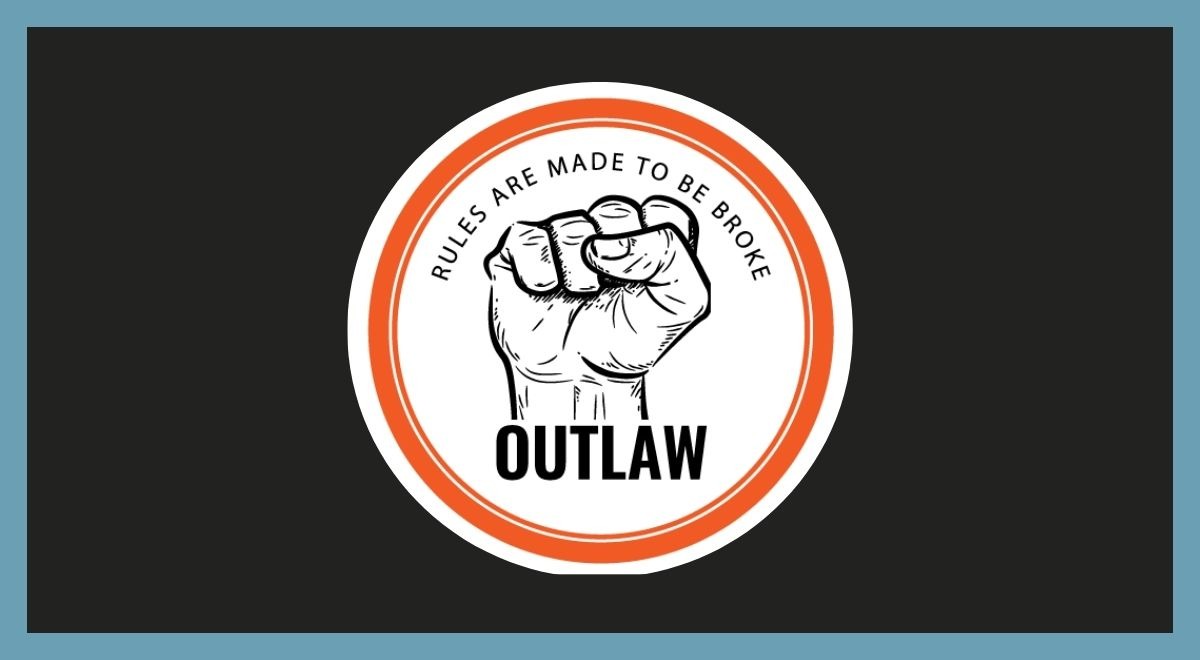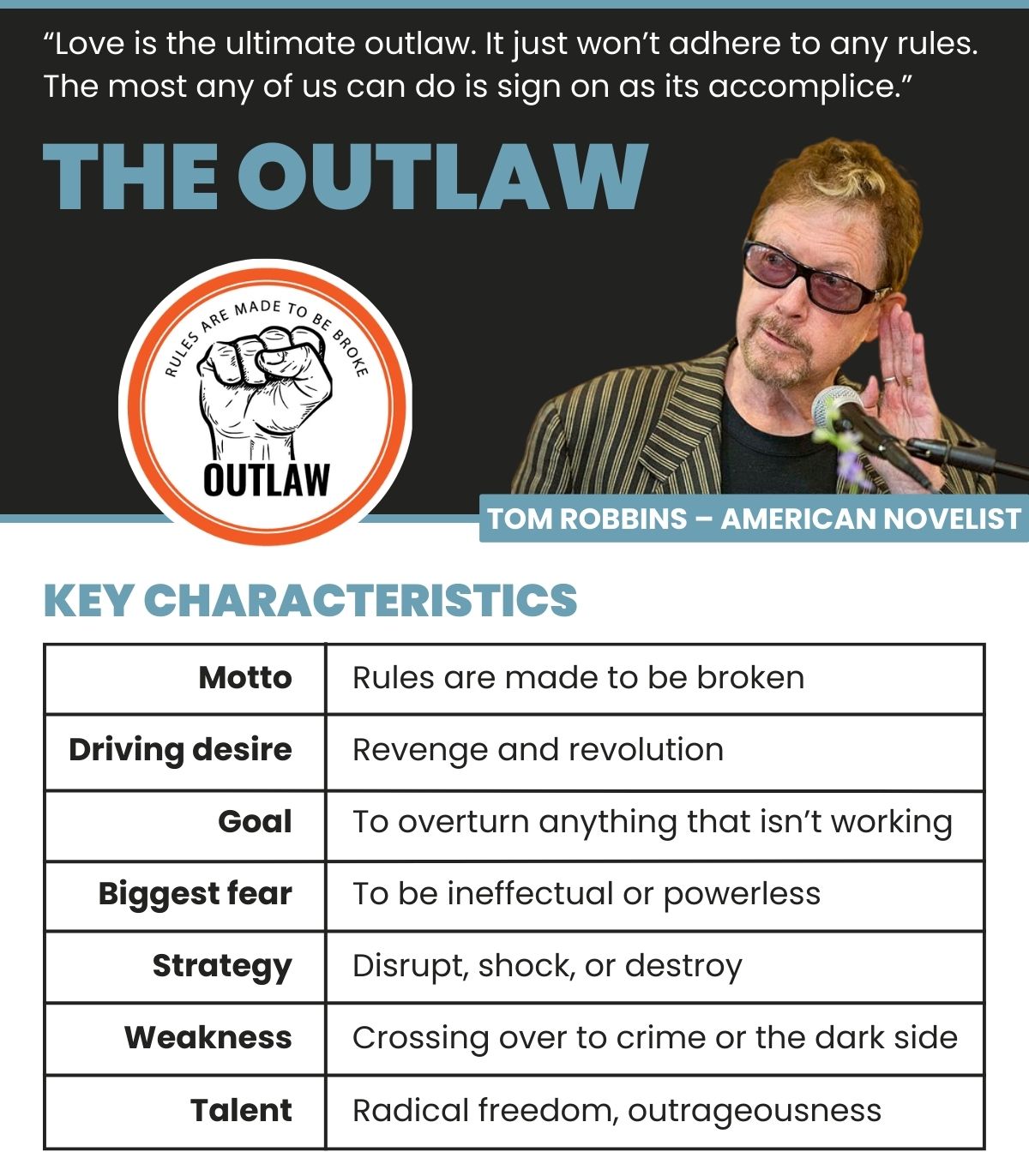Table of Contents
“Love is the ultimate outlaw. It just won’t adhere to any rules. The most any of us can do is sign on as its accomplice.” – Tom Robbins – American novelist [1]
Introduction
The Outlaw, or Rebel as it is sometimes called, desires change above all else. Often, they will make those around them uncomfortable with the status quo and incite a need for change. Outlaw brands often have radical ideas designed to shock the customer.
Also known as a rebel, revolutionary, wild man, the misfit, or iconoclast
Key Characteristics
- Motto:Rules are made to be broken
- Driving desire:Revenge and revolution
- Goal:To overturn anything that isn’t working
- Greatest fear:To be ineffectual or powerless
- Strategy:Disrupt, shock, or destroy
- Weakness:Crossing over to crime or the dark side
- Talent:Radical freedom, outrageousness
Description of the Outlaw
The Outlaw archetype is rarer than most due to its style of marketing. Going directly against the grain is uncomfortable for most. Thus, only products that embody this feeling succeed when using this brand type. Examples include motorcycle companies and some activist groups, among others. Motorcycles, for example, are viewed as a rebellious thing to own and ride; thus, the Outlaw would be a good fit to market such an item. Activist groups advocate for change, most often when change is not wanted. The Outlaw is also often seen in movies, with anti-heroes and heroes with a darker edge being marketed heavily. Examples include Wolverine and Guardians of the Galaxy. The characters are rebels; they go against the status quo, often found in heroes but still try to do well.
The Outlaw archetype has three levels. In the first level, a realization occurs. The person or brand begins to identify itself as an outsider. What the brand markets or stands for is not universally accepted or loved. They begin to pull away from the status quo. The second level has the company or organization begin engaging in inciteful behavior. This behavior does not mean they break the law or do harmful things, but instead, they act in a way that draws attention because it goes against the grain. It is shocking and sticks in people’s minds. The third level has the Outlaw brand become a revolutionary. A revolutionary begins to affect the world and achieve real change. For many activist groups, this is their ultimate goal and the reason for their existence.
Harley Davidson is the brand many people think of when they think of an Outlaw or Rebel. It defies societal norms and is proud of it. Their marketing crafts and image of freedom from traditional society. One of their slogans is “All for freedom, freedom for all.”
- Brand Motivations
- Outrageousness
- Boldness
- Revolution
- Liberation
- Change
- Righteousness
- Revenge
- Independence
- Freedom
- Rebellion
- Brand Challenges
- Boring
- Timidness
- Servitude
- Trivial
- Conformity
- Acceptance
- Dependence
- Complacency
- Imprisonment
- Brand Strategy
- Challenge the status quo
- Going against the grain
- Disruption combined with shock
The Outlaw in the Wild
The following companies, organizations, and industries are good examples of the Outlaw.
- Archetype Examples: Harley-Davidson, GoDaddy, Virgin, Diesel, MTV, Mountain Dew, Monster
- Industries: Energy Drinks, Motorcycles, Fringe Apparel, Consultants, Coaches, Technology, Alcohol
Conclusion
The Outlaw, or Rebel, wants to break free from society. They often feel trapped or limited by the rules and constraints around them. A company using this marketing scheme likely has a product or agenda that is not considered acceptable by society as a whole, which can be very appealing for many people.
[1] “Tom Robbins”, (2020 July 18), Retrieved from: https://www.britannica.com/biography/Tom-Robbins


